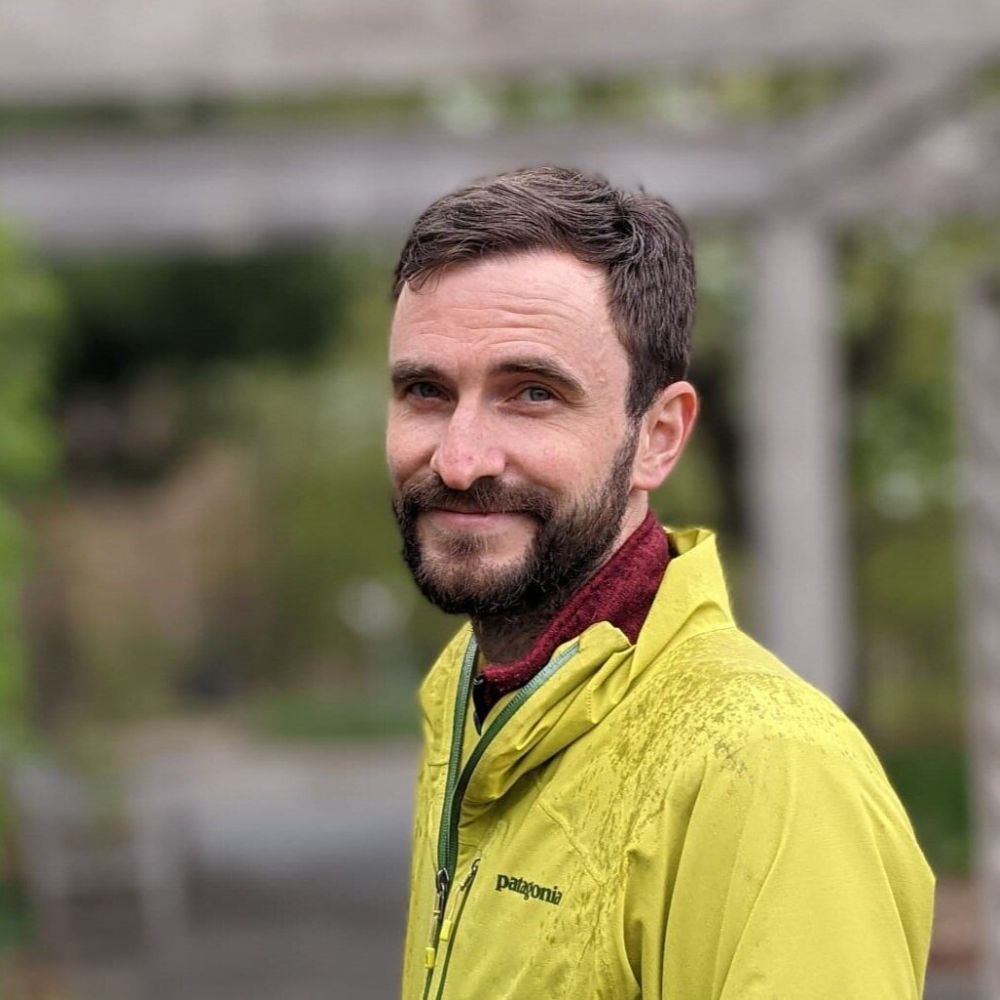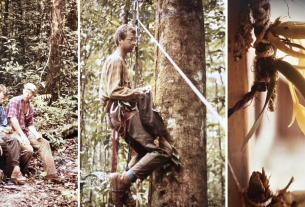|
Getting your Trinity Audio player ready...
|
Journal of Ecology is delighted to announce that 28 new Associate Editors have joined the Editorial Board following our latest open call!
You can find out more about our new editors below. Please join us in welcoming them to the journal!

Peter Chatanga
National University of Lesotho, Lesotho
Peter is a Plant Community Ecologist whose expertise lies in Plant Ecology and Biodiversity. He is particularly interested in studying the complex networks of relationships between organisms and their environment, and how these interactions shape community structure and organisation, as well as ecosystem functioning. His research aims to contribute to our understanding of how communities respond to environmental changes and provide valuable knowledge for the conservation and sustainable management of biodiversity. Much of his work revolves around wetlands, riparian ecosystems, grasslands and savannahs, including in montane areas.

Anping Chen
Colorado State University, United States
Anping is a broadly trained plant ecologist who studies processes ranging from fine-scale plant physiological and community dynamics to ecosystem- and global-scale fluxes of carbon and water. He is particularly interested in ecosystem dynamics under climate change and associated carbon and water cycle impacts. His research emphasizes multi-disciplinary tools (e.g., field surveys and experiments, remote sensing, statistical and process-based modeling) and the integration of multi-scale processes.
–

Francesco de Bello
Extensión Universitaria, Spain
Francesco trained as a plant ecologist and agronomist. Using meadows, alpine vegetation and Mediterranean vegetation as a study framework, he assesses the role of functional trait diversity at the interface between community assembly and ecosystem service delivery. His interests also include the effects of climate and land-use changes on the temporal stability and resilience of communities.
–
–

Pedro Gundel
University of Talca, Chile
Pedro’s research focuses on understanding how symbiotic microorganisms mediate plant interactions with biotic and abiotic factors. He is interested not only in the effect of symbionts on host performance, but also in how plant stress caused by various environmental factors can affect symbiosis functioning and persistence in nature. His research mainly revolves around the symbiosis of cool-season grasses with vertically transmitted fungal endophytes, and encompasses factors of both natural occurrence (such as herbivory, drought, high temperatures, and ozone) and anthropic origin (such as pesticides).

Yann Hautier
Utrecht University, Netherlands
Yann’s research focuses on the causes of change in plant diversity in response to global environmental changes and their consequences on the functioning of grassland ecosystems and the stable provision of ecological services. To this end, he employs observational and experimental approaches, advanced statistical analyses and data synthesis of complex data sets as well as mechanistic approaches applied at the local, regional and global scale. The central theme of his work is testing ecological theory, advancing fundamental mechanisms, and providing guidance for the conservation and restoration of biodiversity.

Jonathan Henn
University of Colorado Boulder, United States
Jon is interested in understanding how plant communities respond to global changes. His research has focused on how temperate and alpine grasslands have changed and how management actions, disturbance, and plant functional traits might mediate these changes. He is especially interested in using ecological theory to inform sound management of ecosystems undergoing change.

Shouli Li
Lanzhou University, China
Shouli is a population ecologist. She is particularly interested in population ecology and environmental decision-making in the areas of ecological restoration, biodiversity conservation, and optimal management of invasive species. Her current research focuses on the impacts of climate change on population dynamics and life history evolution of plants in diverse grassland ecosystems, especially alpine grasslands and arid grasslands.
–

Yuanzhi Li
Sun Yat-sen University, China
Yuanzhi is broadly interested in community ecology and theoretical ecology. His research focuses on community assembly and species coexistence from the perspectives of both interactions between species (especially the indirect interactions, e.g. higher-order interactions) and their functional traits.
–
————————————————————–

Weixing Liu
Chinese Academy of Agricultural Sciences, China
Weixing is an ecosystem ecologist. Her research focuses on understanding the underlying mechanisms of soil carbon cycling as well as plant and microbial community in responses to global changes (warming, precipitation regime, nitrogen deposition), mostly in grassland ecosystems. She also has interest in changes in biodiversity and consequent community assembly under environmental changes.
–

Xiang Liu
Lanzhou University, China
Xiang is plant and microbial ecologist, working at the interface of disease ecology and community ecology. His research focuses on how biotic and abiotic factors regulate plant diseases, and how plant enemies affect population dynamics, species coexistence and ecosystem functions. His research combines field surveys and experiments, data synthesis, meta-analyses and laboratory studies.
–

Yanjie Liu
Northeast Institute of Geography and Agroecology, China
Yanjie’s research primarily focuses on plant ecology, employing greenhouse and field experiments, as well as database analysis, to test hypotheses and quantify processes across various spatial and temporal scales. He has a particular interest in biological invasions and global change biology.
–
————————————————————–

Xiao-Tao Lu
Institute of Applied Ecology, Chinese Academy of Sciences, China
Xiao-Tao’s work focuses mainly on the responses of plant community composition and ecosystem function to global change drivers and ecosystem management strategies. He carries out field works with long-term monitoring, large-scale transect investigation, and mainly manipulative experiments in grassland and forest ecosystems.
————————————————————–

Xinmin Lu
Huazhong Agricultural University, China
Xinmin is a a community ecologist working in invasion biology, above- and below-ground interactions, and climate change. He is particularly interested in understanding how soil-plant-insect interactions respond and feedback to climate change and alien species invasion, by integrating biogeographic field surveys, multi-year field experiments and laboratory analyses. He is also interested in understanding how alien invasive species impact resident communities and ecosystem functions, the linkage between invasive species’ impacts and their functional traits or phylogenetic distinctiveness across biogeographic gradients.

Wentao Luo
Institute of Applied Ecology, Chinese Academy of Sciences, China
Wentao is an Associate Professor at the Institute of Applied Ecology, Chinese Academy of Sciences. His research aims to understand the consequences of human-caused climate change, particularly extreme drought, on plant populations and communities in grassland ecosystems. At present, his research focuses on assessing the role of community functional composition in the resistance and resilience of grasslands to extreme drought.
–

Sean McMahon
Smithsonian Environmental Research Center, United States
Sean’s work focuses on how tree demography drives large-scale patterns of forest structure, function, and diversity. He is interested in scaling physiological processes, such as photosynthesis and plant hydraulics, to ecosystem outcomes through tree vital rates, such as growth and mortality. He does this using statistical and process-based models to integrate biological and environmental data, with an eye towards how these dynamics can be detected by remote sensing.
–

Taofeek Muraina
Oyo State College of Agriculture and Technology, Nigeria
Taofeek is a plant community ecologist and his research activities encompass assessment and management of grasslands, savannas, and related ecosystems for efficient functioning and sustainable delivery of ecosystem services under current and future global/climate change factors (e.g., extreme drought, eutrophication, grazing, soil disturbance).
————————————————————–

Charlotte Ndiribe
University of Lagos, Nigeria
Charlotte specializes in phylogenetic and pollution ecology. Her research interests are in the ecology and evolution of plant populations and communities. She uses integrated datasets (comprising ecological traits, phylogenetic trees, biodiversity and environmental variables) to understand how climate or other environmental change shape plant species distributions. Her other research interest is in applied ecology, where she investigates how ecological problems (such as pollution and disruptive anthropogenic alterations) can be solved with technology.

Ana Novoa
Academy of Sciences of the Czech Republic, Czech Republic
Ana uses an interdisciplinary approach to understand the socioecocomic and ecological factors influencing biological invasions and their management. Generally, she is interested on the history of introduction, ecology, distribution, and management of invasive plants globally.
–
————————————————————–

Adam Pellegrini
University of Cambridge, United Kingdom
Adam leads a group that works on understanding the patterns and processes determining carbon storage from an ecological perspective. They combine field experiments with ecosystem models and collaborations with industry players to address real-world challenges in slowing climate change. Their focus is on disturbance regimes such as wildfire, grazing, and agriculture and soil organic matter dynamics, but they have a diverse set of projects that address underlying questions in how ecosystems will respond to global change.

Sergey Rosbakh
University of Copenhagen, Denmark
Sergey is a plant scientist with a broad interest in various fields; Sergey enjoys combining methods from classical botany, plant functional ecology, vegetation science, and biodiversity research with modern statistics, to better understand the fascinating plant realm. Sergey’s research interests are particularly focused on the mechanics of plant-(a)biotic interactions driving species distribution and community assembly along environmental gradients; functional ecology of plant sexual reproduction; and plant responses to global change.

Kimberly Simpson
University of Sheffield, United Kingdom
Kim is a plant ecologist with a broad interest in the causes and consequences of plant functional diversity. In particular, her research has focused on how fire shapes grass functional traits, and how in turn grasses influence fire regimes through their traits.
–
————————————————————–

Shinichi Tatsumi
Forestry and Forest Products Research Institute, Japan
Shinichi is a community ecologist studying spatiotemporal variation in community structure and its links to ecosystem functioning. He employs a variety of approaches, including experiments manipulating biodiversity and global change drivers, long-term observations in temperate and boreal forests, statistical modeling of plant competition, and individual-based simulations of phylogenetic and functional community structure. His recent work involves developing numerical methods to partition spatial beta diversity over time and disentangle demographic dynamics in biodiversity experiments.

Cameron Wagg
Agriculture and Agri-Food Canada, Canada
Cameron’s work looks at the interactions within and between plant and soil communities in agricultural and grassland systems. His interests are in the application of biodiversity-ecosystem functioning relationships and concepts for the development of ecologically diverse and sustainable agricultural ecosystems. His expertise is in soil biodiversity-ecosystem functioning and plant community ecology.
–
–

Weifeng Wang
Nanjing Forestry University, China
Weifeng’s interests lie in the effects of natural and human disturbance on ecological process, function, and geographical pattern, especially the regulation of ecosystem productivity and exchanges of trace gases between the atmosphere and ecosystems. He uses observational, experimental, and modelling approaches to answer the questions related to terrestrial ecology. His current research focuses on: (1) how to adapt forest management practices to improve carbon sequestration and storage in subtropical and temperate forests, (2) vulnerability of trees to future climate on the regional and global scale, and (3) methane dynamic in forest ecosystems.

Jianyang Xia
East China Normal University, China
Jianyang is interested in the feedback between community structure and ecosystem functions under global changes. He focuses on integrating ecosystem-level manipulative experiments and process-based models to improve the predictions of vegetation dynamics and biogeochemical cycles under climate change. He is also interested in developing a traceability framework to reduce the uncertainty of ecological processes in Earth system models.
–

Xian Yang
Sun Yat-sen University, China
Xian is a community ecologist with a broad interest in biodiversity, community assembly, and ecosystem functioning. Through her research, she seeks to unravel the mechanisms underlying the dynamics of plant and plant-associated microbial communities in response to anthropogenic environmental changes. Her work aims to enhance our understanding of how human activities shape and influence biodiversity patterns and the delicate balance of ecosystems.
–

Xuhui Zhou
Northeast Forestry University, China
Xuhui is an ecosystem ecologist broadly interested in understanding effects of global climate change on carbon and nitrogen cycling by manipulative experiments and data-model fusion in grasslands and forests. His current work aims to advance our knowledge on responses and adaptation of belowground processes to gradient warming and extreme drought.
————————————————————–
Yong Zhou
Utah State University United States
Yong conducts research on the dynamics of savanna vegetation and their impact on savanna carbon and nutrient cycles. Specifically, his work aims to understand the interactions between local and global drivers that affect the distribution and structure of woody plants in savannas. He also focuses on quantifying the biogeochemical consequences of woody encroachment in savannas at various spatial scales and identifying where and how local management interventions can alter woody encroachment trajectories.


